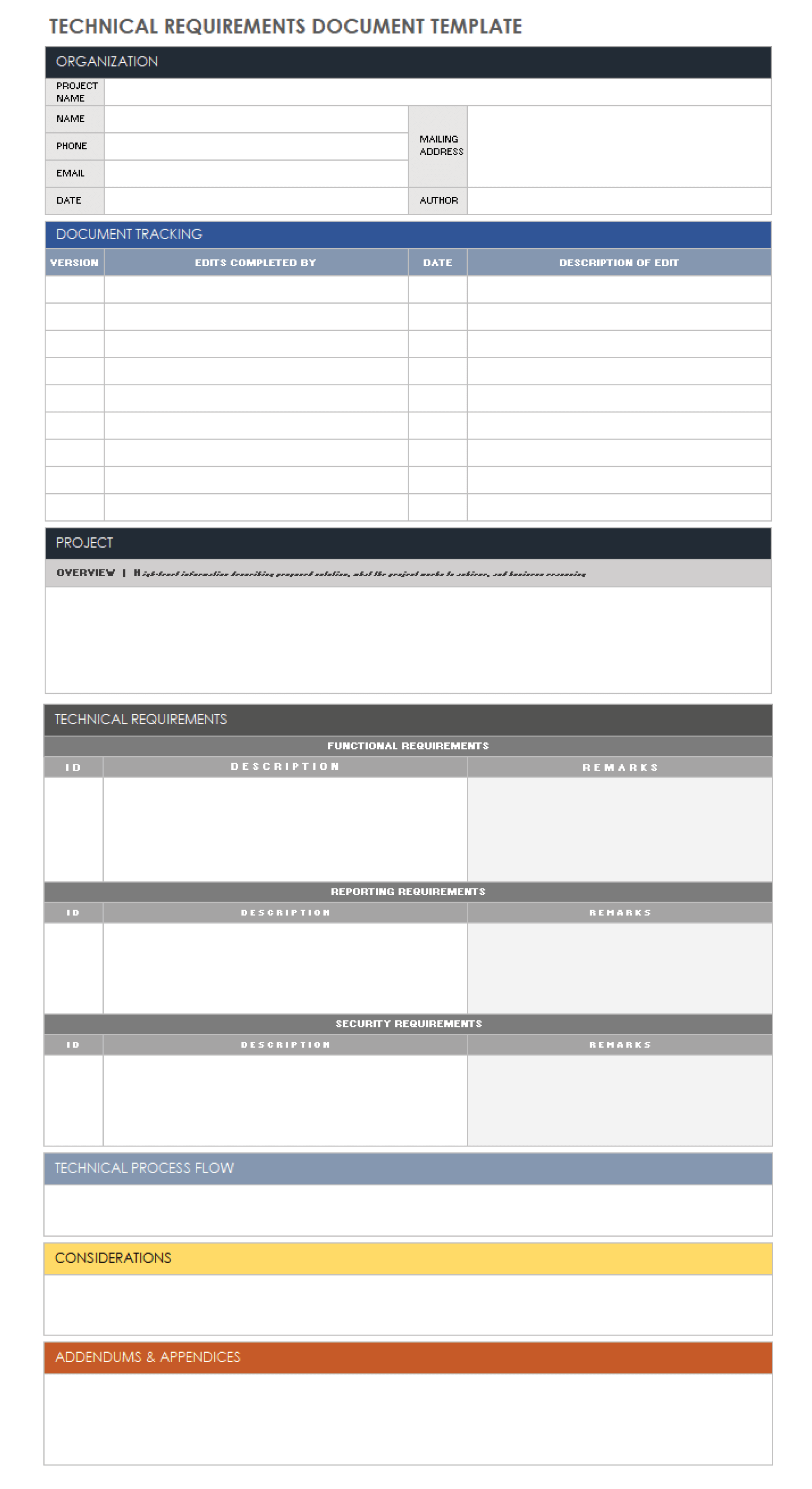Crafting a top-notch software product requires meticulous planning and documentation. The key to success lies in capturing every aspect of your project’s requirements upfront. This is where a comprehensive project requirement specification (PRS) template comes into play. A well-defined PRS lays the foundation for clear communication, smooth execution, and exceptional outcomes.
A project requirement specification template provides a structured framework to document the essential aspects of your project. It outlines the project’s purpose, scope, stakeholders, and the specific functionalities and features that need to be developed. By using a template, you can ensure uniformity and completeness across multiple projects, streamlining your requirements gathering and documentation process.

Understanding the Components of a Project Requirement Specification Template
A typical project requirement specification template consists of the following sections:
- Introduction: Provides an overview of the project, its purpose, and the intended audience.
- Scope and Objectives: Clearly defines the project’s boundaries, including what will be delivered and what will be excluded.
- Stakeholders: Identifies the individuals or groups who have a vested interest in the project.
- Functional Requirements: Describes the specific features and functionalities that the software product must deliver.
- Non-Functional Requirements: Covers aspects such as performance, usability, security, and maintainability.
- Constraints and Assumptions: Lists any external factors or assumptions that may impact the project.
- Glossary: Defines technical terms and acronyms used throughout the document.
- Acceptance Criteria: Outlines the conditions that must be met for the project to be considered complete and accepted.
Benefits of Using a Project Requirement Specification Template
Utilizing a project requirement specification template offers numerous advantages:
- Improved communication: A well-defined PRS ensures that all stakeholders have a clear understanding of the project’s requirements, reducing the risk of misunderstandings and misalignment.
- Reduced errors: By providing a structured framework, the template helps identify and mitigate potential errors early on, saving time and resources during development.
- Enhanced quality: A comprehensive PRS ensures that the final product meets the intended objectives and satisfies user needs.
- Increased efficiency: Using a template streamlines the requirement gathering and documentation process, allowing teams to focus on delivering value.
- Improved decision-making: A clear PRS provides a solid foundation for making informed decisions throughout the project’s lifecycle.
Conclusion
A project requirement specification template is an invaluable tool for successful software development projects. By providing a structured and comprehensive framework, it ensures clear communication, reduces errors, enhances quality, and improves efficiency. Embracing the use of a PRS template is a testament to your commitment to delivering exceptional software products that meet the needs of your stakeholders.
Remember, meticulously documenting your project requirements is the cornerstone of any successful endeavor. By leveraging a project requirement specification template, you empower your team to build software products that exceed expectations and leave a lasting impact.